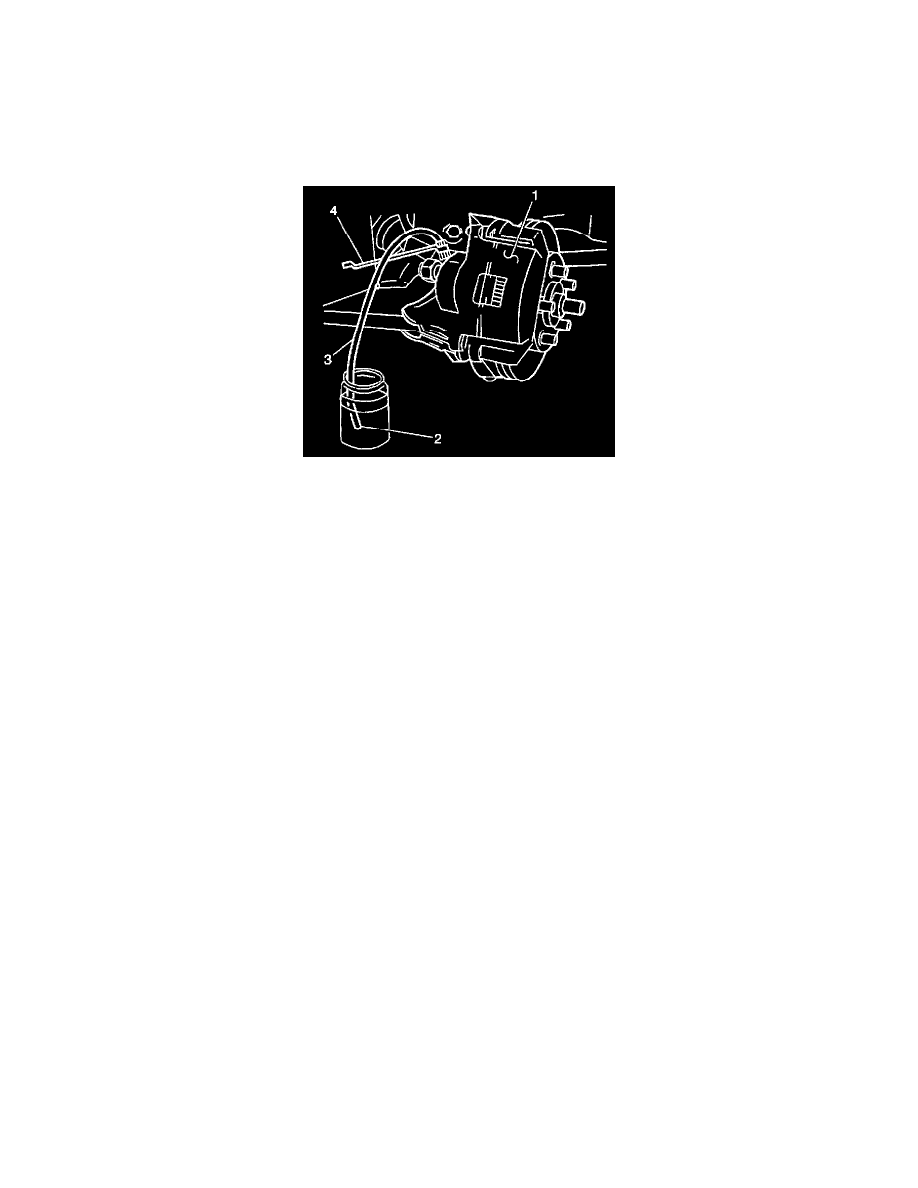Lumina V6-3.1L VIN J (2000)

17. If pedal travel feels soft or has excessive travel either initially or after the engine start, do not drive the vehicle. Re-bleed the brake system.
18. Perform a road test on the vehicle. Make several normal (non-ABS) stops from a moderate speed in order to ensure proper brake system function.
Allow adequate cooling time between stops.
Manual Bleeding
Important: In the following procedure, use a suitable container and/or shop cloths in order to catch and prevent the brake fluid from contacting any
painted surfaces.
1. Clean the brake fluid reservoir cover and the surrounding area.
2. Remove the brake fluid reservoir cover.
3. Inspect the brake fluid level. Fill the reservoir to the correct level if necessary.
4. Install the brake fluid reservoir cover.
5. Raise and suitably support the vehicle. Refer to Vehicle Lifting.
Important: The brakes must be bled in the sequence indicated.
1. Right rear
2. Left front
3. Left rear
4. Right front
Important: Ensure that the bleeder valves do not leak.
6. Perform the following steps in order to bleed the wheel brakes in the sequence indicated.
6.1.
Attach a clear bleeder hose (3) to the bleeder valve at the wheel.
6.2.
Submerge the opposite hose in a clean container (2) partially filled with clean brake fluid.
6.3.
Open the bleeder valve.
6.4.
Slowly depress the brake pedal.
Important: In order to assist in freeing the entrapped air, tap lightly on the caliper (1) in order to dislodge any trapped air bubbles.
6.5.
Close the valve and slowly release the brake pedal.
-
Tighten the front caliper bleeder valves to 13 Nm (115 inch lbs.).
-
Tighten the rear wheel cylinder bleeder valves to 7 Nm (62 inch lbs.).
7. Lower the vehicle.
8. Remove the brake fluid reservoir. Fill the reservoir to the correct level if necessary.
9. Install the brake fluid reservoir cap.
10. Turn the ignition to the RUN position, then turn off the engine.
11. Apply the brake pedal with moderate force and hold the brake pedal. Note the pedal travel and feel.
12. If the pedal feels firm and constant and pedal travel is not excessive, start the engine. With the engine running, re-check the pedal travel.
13. If the pedal travel is still firm and constant and pedal travel is not excessive, perform a road test on the vehicle. Make several normal (non-ABS)
stops from a moderate speed in order to ensure proper brake system function. Allow adequate cooling time between stops.
14. If pedal travel feels soft or has excessive travel either initially or after the engine start, do not drive the vehicle. Re-bleed the brake system.
15. Perform a road test on the vehicle. Make several normal (non-ABS) stops from a moderate speed in order to ensure proper brake system function.
Allow adequate cooling time between stops.
